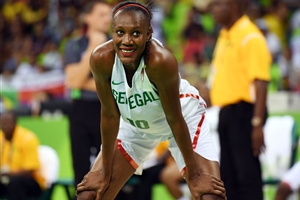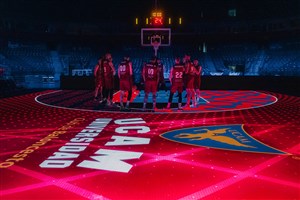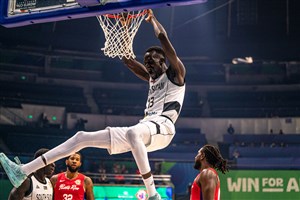
Sharing the love around
MELBOURNE (Paulo Kennedy's View from Downunder) - Last week I wrote about the need for action to stop basketball slipping to the back blocks of women's sport in Australia.
Other sports are investing significant money generated from their men's competitions into creating semi-professional women's competitions in order to present themselves as good corporate citizens and explore whether there is a genuine market for women's sport as an entertainment product.
What we have seen so far, albeit from a small sample size, is there appears to be more public interest in watching women play traditionally Australian sports such as cricket and Australian rules football, than what are perceived as imported sports like basketball and soccer.
This creates an additional challenge for Basketball Australia (BA) in its management of the WNBL and its ability to develop current and future generations of Opals to compete at the FIBA Women’s World Cup and Olympics.
If the right action isn't taken now, women's basketball could well suffer the way men's basketball Downunder did for a number of years as a poor cousin to the bigger sports: struggling for exposure, losing clubs, struggling to find opportunities for young players and losing quality players overseas, all of which ultimately hurt the national program.
Opportunities?
A quick SWOT (Strengths, Weaknesses, Opportunities and Threats) analysis shows something needs to change:
- Strengths - Basketball has a large female participation base, established WNBL and state league clubs and a well-coordinated national program across junior and senior levels
- Weaknesses - The WNBL has no television deal to reach that participation base, few other ways to tap into that participation base, hence little attractiveness to significant sponsors, and therefore the significant cost of running a WNBL program is a challenge for franchises
- Opportunities - ?
- Threats - Other sports, the cost of running a WNBL program, the growing standard of women's basketball around the globe
So no prizes for guessing, looking at that analysis, that I'm going to look at what opportunities could be created to navigate through the current sea of threats.
Cut costs, keep quality?
Let's be frank: without significant TV coverage, the cost of running a WNBL program is a huge challenge, particularly in big cities where the club isn't a big fish in a small pond.
So it's pretty clear that cost needs to be cut. How to do that? The obvious first point of call is player wages, but that creates a real conundrum in terms of the product on offer.
We already have quality players like Liz Cambage, Abby Bishop, Rachel Jarry, Cayla George, Lou Tomlinson, Tess Madgen, Steph Talbot, Alex Bunton, Katie Ebzery, Bec Allen and Nat Hurst playing in Asia or Europe this season instead of the WNBL, while Erin Phillips is having a crack at Aussie rules football.
If that line-up was picked for the Opals for this year's FIBA Women's Asia Cup, few would bat an eyelid, such is their quality. Their absence from Australian shores already speaks to the WNBL’s struggles to offer a competitive wage.
So how can we reduce costs without further reducing the star power that used to be a real drawcard of the competition? I'll get back to that soon.
Sharing the love
Whether you are trying to attract television broadcaster or cover for not having one, the key is exposure to as much of the population as possible.
Obviously TV networks want the product to be attractive to as many eyeballs as possible, and that means having as many 'local teams' people have an interest in as possible.
If there is no coverage then community outreach becomes even more important, allowing clubs to reach more potential fans, spread their sponsors' brands further and offer more to potential private or public partners interested in promoting sport and healthy lifestyles to girls.
As it stands, however, the WNBL has huge pockets of the Australian population it doesn’t touch and, without TV as the bridge across that divide, this can be detrimental to participation in the long term if not addressed, and that will eventually impact the Opals.
Development satellites
The other opportunity is to improve our successful national junior program by incorporating it more closely with our elite women’s league and fill the gap between junior representation and graduation to the Opals.
While having our best junior talent located together in Canberra and playing in the second-tier SEABL has merit, having them embedded with a WNBL team close to their home during the summer season, and relocated to the Centre of Excellence (CoE) for periods during winter seems a better model of development.
This would involve WNBL clubs incorporating aspects of the national junior development program into their club training, and allow players to stay in that same development environment after they finish their stint as a CoE player.
It also puts in place high-level development infrastructure for other young players at WNBL clubs who are not selected for the CoE, broadening the development base around the country.
Of course, the issue to overcome is when do these CoE players get a chance to compete on court given the talent ahead of them on WNBL rosters?
Go where the people are
So how do we reach more of the population, keep more of our best players in Australia without current clubs having to spend more, make running a WNBL club less expensive and open up roster spots for more young talent?
One solution is WNBL teams in more locations, particularly in high population centres.
Currently there are teams representing Perth, Adelaide, outer south-east Melbourne, Bendigo, inner southern Sydney, Canberra and Townsville.
That leaves Tasmania, north and west Melbourne, Geelong, west Sydney, the Central Coast, Newcastle and the entirety of south-east Queensland as huge black spots in terms of both attracting TV audiences and reaching young girls to promote basketball and healthy lifestyles.
Adding teams from a number of those areas gives the WNBL, and women’s basketball, far greater reach into the community. This gives greater leverage to create partnerships with the corporate world, government agencies and potentially NBL clubs to deliver community engagement.
In short, it provides a greater number of role models for young girls and puts them closer to a greater chunk of the population.
Stars and youngsters
As it is, the cost of entering a team is prohibitive to many prospective entrants, but by incorporating each WNBL team directly into the national talent pathway it could create opportunities for funding, particularly with the associated increase in community engagement.
In terms of player costs, if each of the WNBL's eight teams currently has seven high-quality players, as an example, with 14 teams in the league the same number of stars would equal around four per team.
That allows clubs to be competitive with a lower overall spend and opens the door for young, local talent to fill around the stars, while still maintaining the wages of our top players.
This model might make it more difficult for mid-level players to enjoy a long career - though the standout leaders would still find a way - but that is the reality of almost any talent pathway.
Now is the time
I'm not pretending the ideas I've presented here are a magic bullet, but with Basketball Australia's current capability in promoting the WNBL, there is no future for it as an eight-team league that only offers opportunities to a select few athletes and only reaches a select few potential players, supporters and corporate backers in the community.
New ideas are needed and hopefully something in this column helps the powers that be devise an innovative approach to the serious challenges at hand.
To build for the future, the WNBL and women's basketball in Australia need a broader base, a more coordinated elite development approach across the country and a model that has our stars playing at home in as many population centres around the nation as possible.
Just as importantly for a sustainable future, it needs a model that puts less stress on current owners and makes entering the league more attractive.
I look forward to what Basketball Australia comes up with, and hopefully soon, because the time to act is now, at the very start of the decline, not once we reach the bottom of the fall as was the case with men’s basketball in Australia.
Paulo Kennedy
FIBA
FIBA's columnists write on a wide range of topics relating to basketball that are of interest to them. The opinions they express are their own and in no way reflect those of FIBA.
FIBA takes no responsibility and gives no guarantees, warranties or representations, implied or otherwise, for the content or accuracy of the content and opinion expressed in the above article.

















